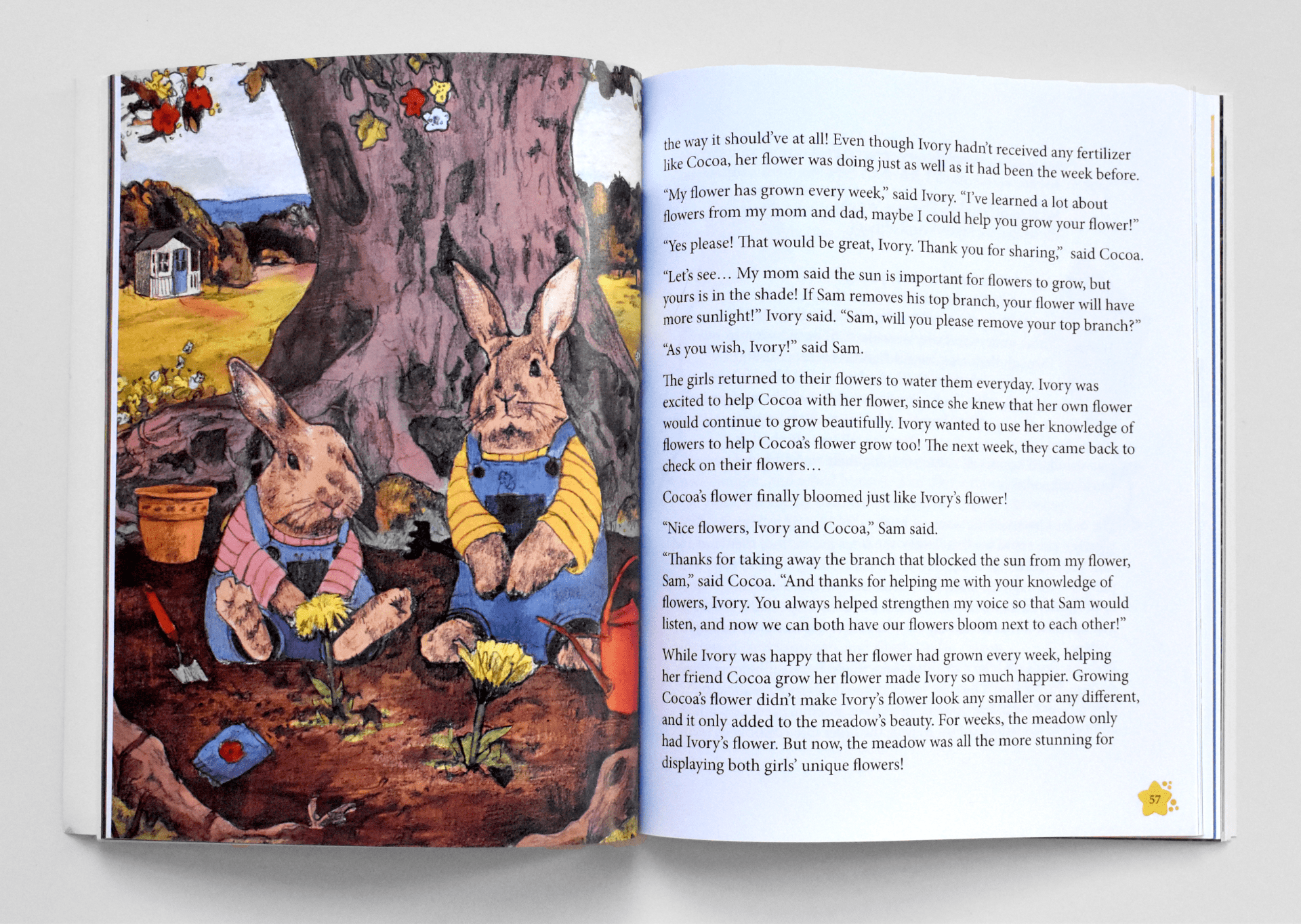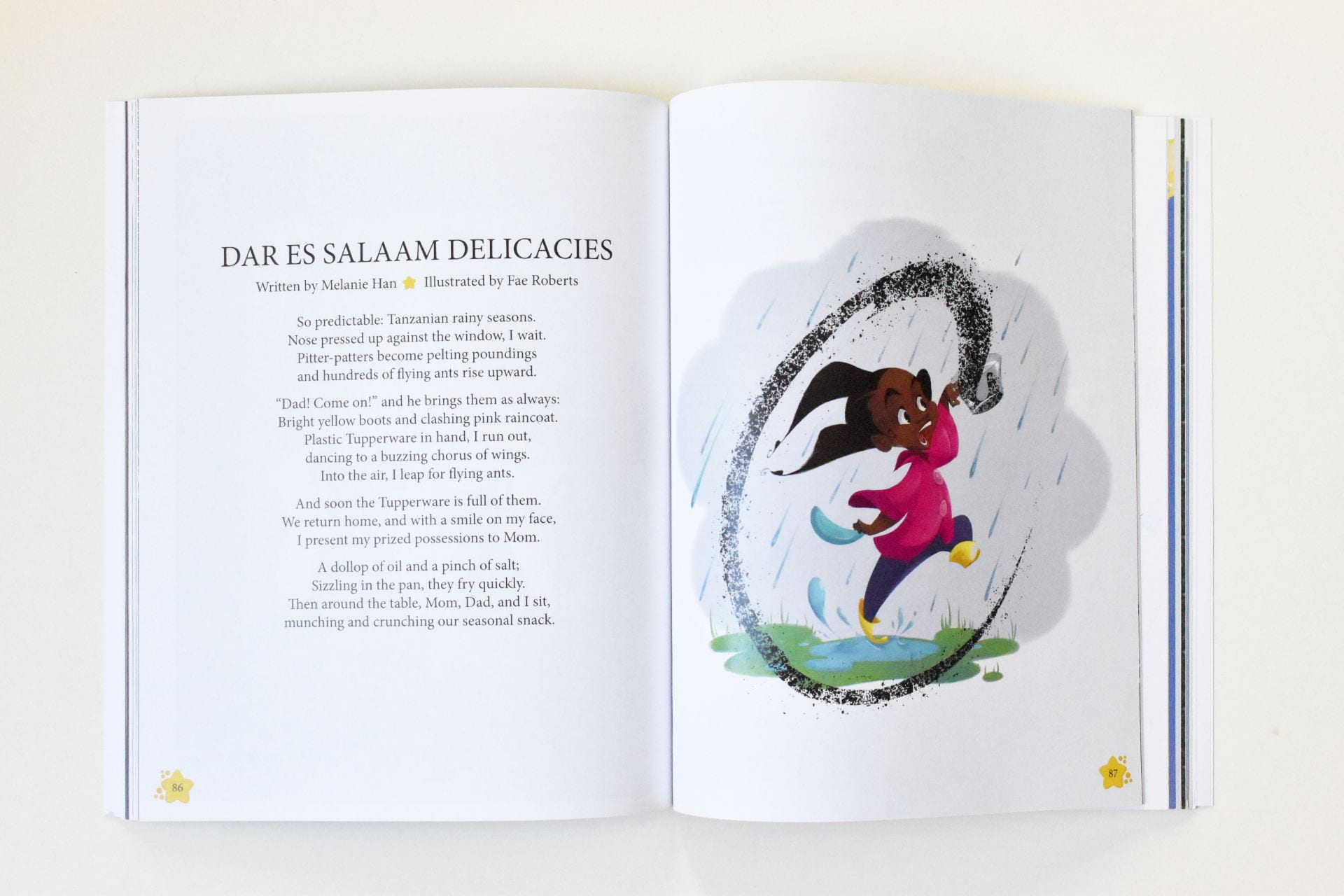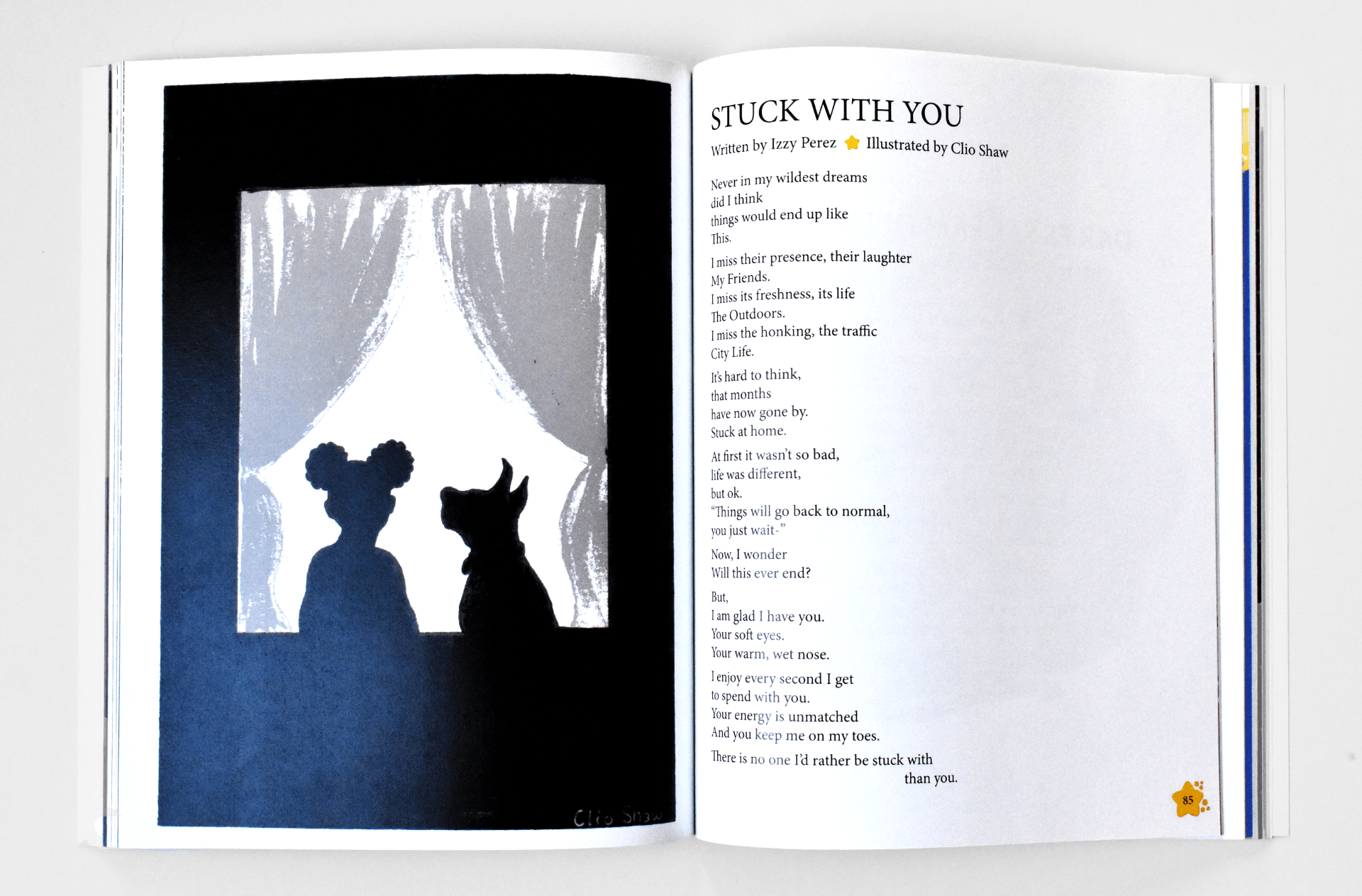Q&A with Illustration major, Amanda Godowski
by Assistant Professor Alex Gerasev
Amanda Godowski is a senior in the Illustration Department pursuing a double major in Ceramics. Amanda was selected to create illustrations and the cover for “Goldfish, Germs, and Galaxies: A Collection of Children’s Stories,” published by Harvard College Children’s Stories (HCCS). This anthology, created in response to the COVID-19 pandemic, brings together voices from around the world through stories and poems submitted by aspiring writers and professional authors from a range of ages and walks of life. All proceeds from the anthology go toward the UNICEF fund for humanitarian relief.
I recently spoke with Amanda about her experience working with HCCS, how she came to focus on illustration, and her advice for other early career illustrators.
 Alex: How did you get involved in the Anthology for Harvard College Children Stories (HCCS)? Was anyone else from MassArt involved?
Alex: How did you get involved in the Anthology for Harvard College Children Stories (HCCS)? Was anyone else from MassArt involved?
Amanda: I was introduced to Nensi Gjata of the HCCS Anthology editorial board through Clio Shaw, a friend in the Ceramics department. Because this was the first anthology HCCS was publishing and I wasn’t sure what they expected from an illustrator, I was a bit apprehensive about participating. But Nensi answered all of my many, many questions and showed me samples of the pieces they wanted illustrated. She also let me know they needed more illustrators, so I reached out to close friends in the Illustration department who could handle a short deadline and could work pro bono for a good cause. We ended up with a lot of MassArt involvement, including Clio Shaw, Nell Valle, Dusty Marchand, Fae Roberts and Sara Eagan.
Alex: How were writers and illustrators paired?
Amanda: Nensi sent each illustrator a set of works to choose from. I selected the poems Pinecone Stew by Laura Straut and Dear Tomorrow by Anna Lucia Kirby because they were written the way I like to write in my free time, using poetic verse and rhythm.
I make art to share whimsical stories and to reflect on my childhood and transition into adulthood. Pinecone Stew sparked nostalgic memories of creating my own play restaurant in my sandbox. Dear Tomorrow held similar attributes, but allowed me to show a different side of my work. Although my art is often chaotic, this piece is solem and hopeful rather than existential.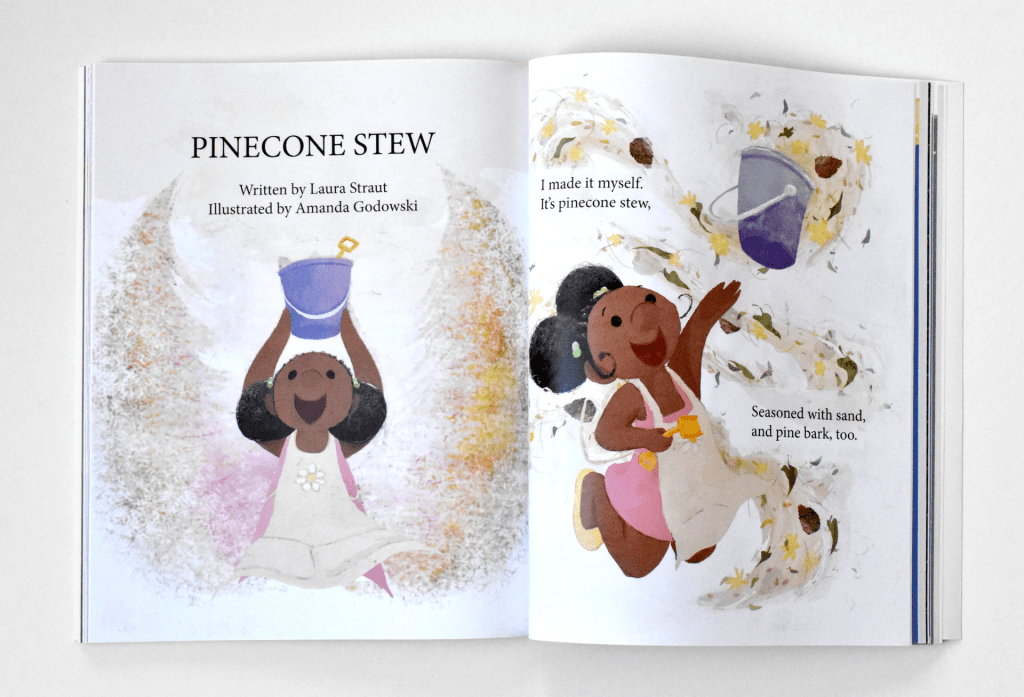 Alex: How did you go about Illustrating work? What was the process like?
Alex: How did you go about Illustrating work? What was the process like?
Amanda: Illustrators were given the freedom to choose our own direction. As a student, I wanted to use this as an opportunity to engage in an open dialogue with the writer and editor. I shared thumbnail sketches and we discussed how they would work with the layout. This way, I got to learn more about the writers so I could better portray their visions. This isn’t something that HCCS usually does with illustrators and writers, however, they were open to the concept of letting me practice the steps of making successful children’s book illustrations.
I’d like to think that my being conscientious and excited to do the work made the HCCS team excited to work with me again, and that is why I was trusted to work on the cover. I recommended a front-to-back spread and provided five or six grayscale thumbnails that included my font choice and placement of text. I didn’t need to provide any color studies, because I only had a few days to complete the task. I was given full liberty to work with the title “Goldfish, Germs, and Galaxies”. Because this anthology was created in response to COVID-19, I did a virus motif on the front cover, while trying to make it lighter by treating it like a planet. It’s so interesting how marine life, germs/viruses, and outer space imagery hold very similar visuals. This concept practically oozed creative possibilities!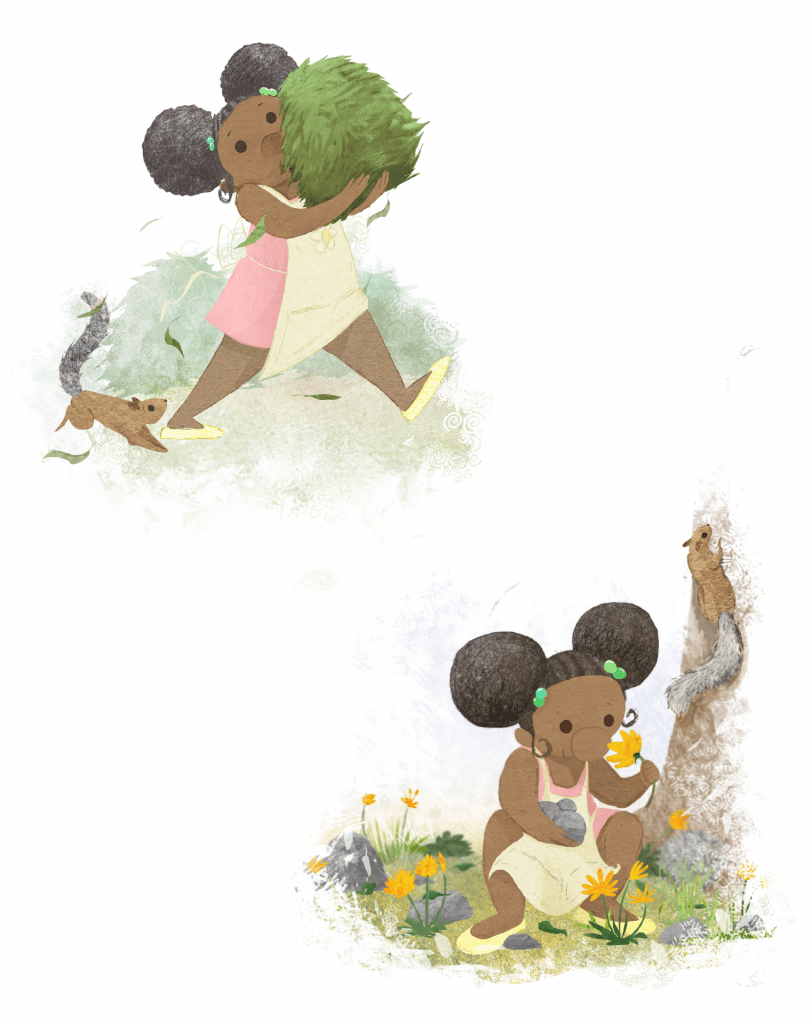 Alex: It can be challenging to create work for children that addresses difficult topics. Did you have to take anything special into consideration?
Alex: It can be challenging to create work for children that addresses difficult topics. Did you have to take anything special into consideration?
Amanda: Dear Tomorrow addresses many difficult topics, such as quarantine during COVID-19, global warming, war, poverty, oppression of race, age and religion. But it is also a beautiful poem that allowed a lot of interesting imagery to emerge. I kept working with the idea of hopelessness and hope and where to find that balance. I utilized a lot of nondescript characters working together while also finding a way to personify “Tomorrow”. I’m excited about how the spot illustrations for that piece merge with each other and work with the reader’s eye as they move along the page.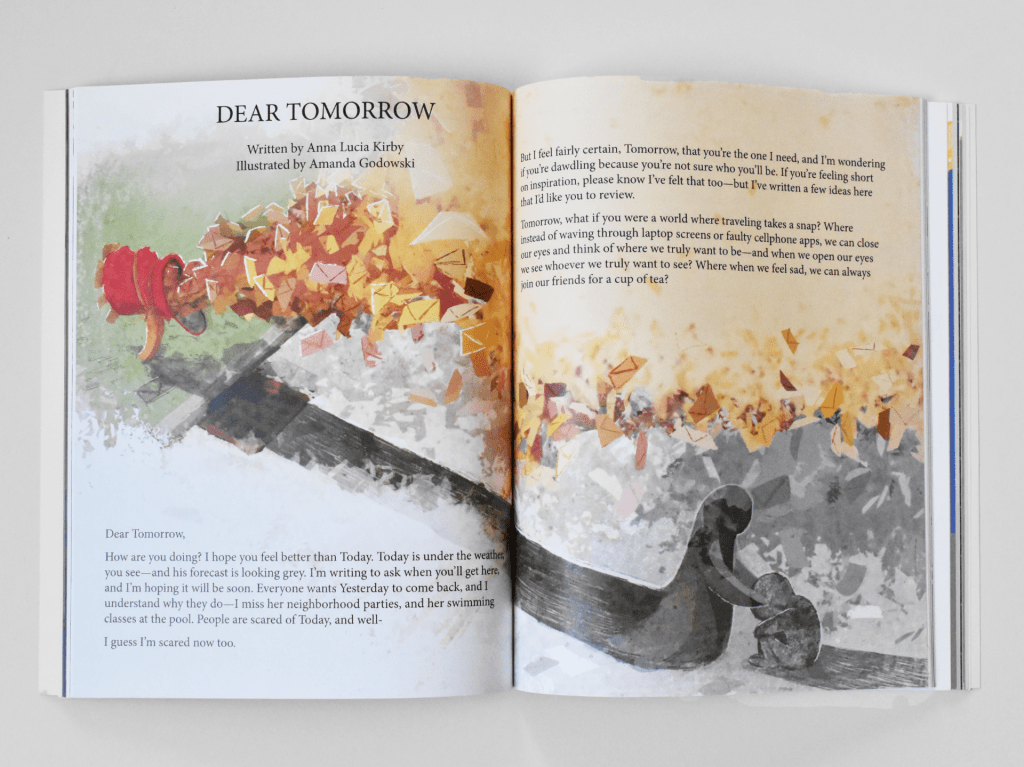 Alex: What draws you to illustrating children’s books? What other areas of illustration do you focus on?
Alex: What draws you to illustrating children’s books? What other areas of illustration do you focus on?
Amanda: Since elementary school I have been an avid drawer. I remember writers and illustrators coming to my school to read their work and wanting to be just like them. I made my own books based on my and other people’s stories.
I realized I connected with illustration when I went to Touchstone Community School in seventh grade. Touchstone had about 100 kids ranging from preschool to eighth grade. Because I started there as one of the older kids, I saw myself as being above the younger students. I quickly learned that wasn’t the case. I formed an art club where I got to teach kids as young as seven or eight how to draw. My connection with those students impacted the way I make art and communicate with others. Since then, I’ve continued creating surreal and fun images for others, in hopes of bringing a little light into their lives.
Alex: Was this your first real-world publishing experience? Did anything surprise you about working as an illustrator in a professional capacity?
Amanda: This was my first publishing experience. The writers and illustrators all contributed their work pro bono, and I found it a great way to not only flex those art muscles but those charity muscles during my time at home. I was surprised by how flexible HCCS was, and I was so happy to be a part of the process. I found that my optimism and courage to ask so many dumb-yet-valid questions really helped me gain a strong connection with them as a client.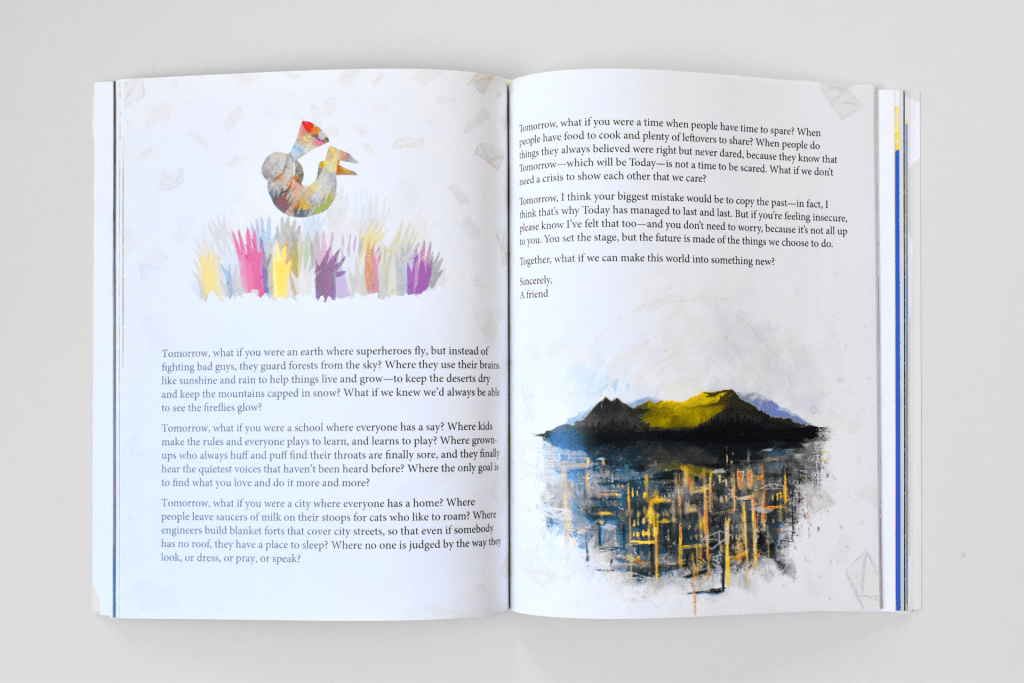 Alex: Are there other opportunities that Harvard College Children’s stories offer to students or early-career artists?
Alex: Are there other opportunities that Harvard College Children’s stories offer to students or early-career artists?
Amanda: HCCS is always looking for people to illustrate books written by children, and they would love to work with more students from the Illustration department. In fact, Nell Valle and Elizabeth Derby, the SGA representatives for Illustration, have remained in contact with Nensi Gjata where they continue a partnership with Harvard College Children Stories! Information is posted on the student-run MassArt Illustration Instagram page.
Alex: What are you currently working on?
Amanda: I am working on my portfolio for children’s books and editorial work, and am hoping to branch out and make concept art as well.
Alex: What advice would you give to illustration students or other early career illustrators about seeking and pursuing opportunities?
Amanda: In addition to organizations like HCCS, reach out to local college communities and see if they want any work done for their papers. It would be a great way to gain experience, build your portfolio and add an interesting talking point when job searching. Always put your best foot forward and advocate for what you envision with your work. If you get confused, it’s okay to ask the client questions, because in my experience, more often than not they want a collaborative relationship. Make sure to keep a positive dialogue when regarding your work with a client. It’s so easy to get bogged down when comparing yourself to others, but remember that your art is unique and beautiful in its own way and deserves to be shared with the world.
● Where to Buy: Amazon
● Support Harvard College Children’s Stories: GoFundMe
● Harvard College Children’s Stories: Website
Amanda Godowski
Website
Instagram
Dusty Marchand
Website
Instagram
Fae Roberts
Website
Clio Shaw
Instagram

